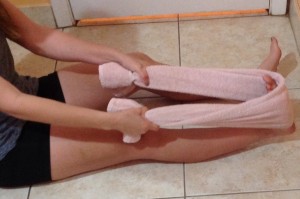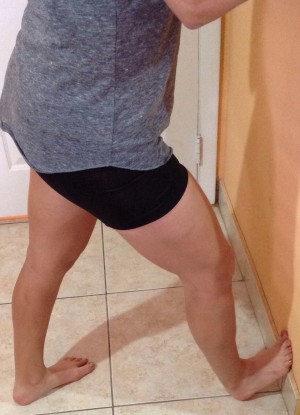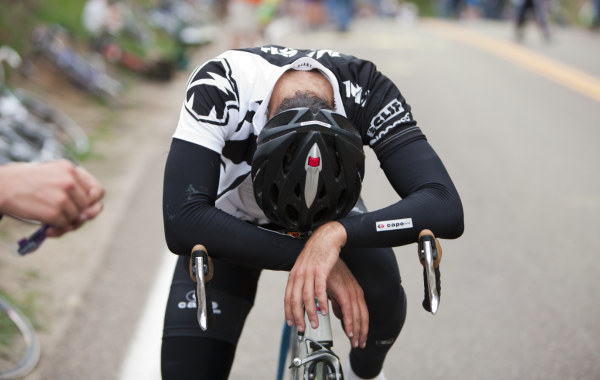Tips to Avoid and Treat Plantar Fasciitis
 You’ve been waking up in the morning with this intense pain on your heel and the arch of your foot, which goes away once you’ve walked around a bit. It also seems to come back whenever you’re on the downstroke while cycling. After researching your symptoms you come to the conclusion that you’re suffering from Plantar Fasciitis, but aren’t sure how to treat the condition, or prevent it from intensifying. Also, you may be wondering “what is a plantar fascia?”
You’ve been waking up in the morning with this intense pain on your heel and the arch of your foot, which goes away once you’ve walked around a bit. It also seems to come back whenever you’re on the downstroke while cycling. After researching your symptoms you come to the conclusion that you’re suffering from Plantar Fasciitis, but aren’t sure how to treat the condition, or prevent it from intensifying. Also, you may be wondering “what is a plantar fascia?”
Anatomy:
The plantar fascia is a series of fibrous structures found on the bottom of your feet. It begins at the heel and finishes at the ball of your foot. The main purpose is to help provide stability to your foot and maintain the integrity of your arch. It is neither categorized as a muscle or tendon.

CAUSES:
There are several causes for this nagging pain impeding your rides. One main cause is tight calf muscles. When your calf muscles are tight, it places extra tension on your Achilles’ tendon and plantar fascia. All of these structures are the continuum of the kinetic chain in your lower leg and foot. Another main cause is having high arches or flat feet. A probable cause can also be the type of shoes you wear when you’re not riding. Some include, converse (in particular if you’re flat footed), flip flops, sandals, or ballet flats. In essence, any shoes which don’t offer arch support.
STRETCHES:
To increase flexibility there are a few stretches you can complete three times a day. These will help prevent and treat plantar fasciitis. When completing any of these stretches ensure you hold each of them for 20 seconds. One easy stretch requires you to fold a small bath towel, place it over the bottom of your foot, and then pull the ends towards you. Another stretch involves placing your heel against the edge of a pole or wall and leaning forward. If on my bike and feeling my calves tighten, I’ve found that standing off the saddle, rotating the affected leg slightly back, and leaning forward gives me a quick calf stretch when riding.
TREATMENT:
If you enjoy drinking Gatorade, don’t throw away the bottles they’ll come in handy for this treatment! Get an empty bottle, freeze water, and then roll the bottom of your foot several times. You can do this multiple times a day or on a as needed basis. With this treatment you’re getting the massage effect and breaking up any knots in the fascia. Additionally, you’re icing it to decrease pain and inflammation. You can also purchase a mini, dense foam roller with ridges to do a self myofascial release, which will decrease pain and increase flexibility. Lastly, you can have a friend who is nice enough to massage this area for you with some bio freeze or ALO analgesic lotion. This method really helps you pinpoint what area has the most restriction so you can focus on it more with the previous two methods.
It is helpful to take some Ibuprofen or naproxen sodium as directed on the bottle for a week. This will further aid in decreasing internal inflammation of the fascia, and in turn reduce pain.

ORTHOTICS:
If you’re flat footed it would be beneficial to visit your local bike shop and have someone help you choose some orthotics that would fit your cycling shoes. I remember when I was having some issues due to my flat arches, the bike fitting specialist suggested these for me and made some adjustments to my clip positioning. These minor changes made a world of difference when I rode and minimized the pressure on my arches during my downstroke. However, if you’re having pain during normal activities of daily living it would be good to purchase some semi-rigid orthotics for your regular shoes as well. By removing the inner sole of the shoe, and replacing it with these orthotics it can aid you throughout the day.
In following these steps you can help prevent plantar fasciitis from worsening. If ignored, this injury can lead to several weeks in a walking boot, unable to ride. It can create a heel spur, which isn’t as easy to treat. Therefore, it’s imperative we listen to our bodies when it’s trying to alert us something is wrong. By catching plantar fasciitis early we can prevent an unwanted visit to our podiatrist.


 Anyone can suffer from overtraining and in fact, it’s more likely to occur in beginner cyclists as they try and do too much, too soon.
Anyone can suffer from overtraining and in fact, it’s more likely to occur in beginner cyclists as they try and do too much, too soon.